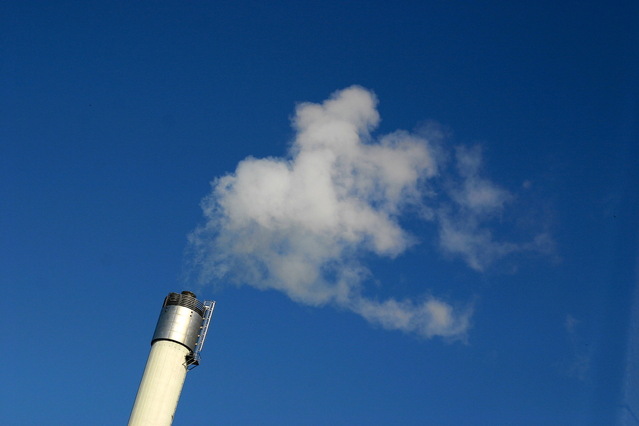
NS Energy lists the five biggest PFI award-winning power plants based on investment
Hornsea 1
Hornsea 1, which received the Institutional Deal of the Year 2018 award in the global category, is being financed by Orsted and Global Infrastructure Partners (GIP).
Hornsea 1 is a 1.2GW project located approximately 120km off the coast of Yorkshire in North Sea, UK. Ownership of the Hornsea 1 project is held by a joint venture between Orsted (50%) and Global Infrastructure Partners (50%). Although the total investment for the project is not disclosed, GIP acquired 50% stake in the project along with a commitment to fund half of the project cost for £4.46bn ($5.84bn), in September 2018.
Spread over 407km², Hornsea 1 will be the world’s biggest offshore wind farm by area. It is installed with 174 units of 7MW Siemens Gamesa wind turbines mounted on 190m-tall towers. The project also features the world’s longest 900km underground power transmission line evacuating power to the North Killingholme onshore substation.
Expected to be operational by 2020, the Hornsea 1 project is capable of powering approximately one million UK households.
Moray East offshore wind farm
Adjudged the best Power Deal of the Year 2018 in the European region, the $3.3bn Moray East offshore wind project will be financed through debt to be provided by JBIC, Danish export credit agency EKF, and a group of 16 private financiers. Santander Corporate & Investment Banking served as the financial advisor to the project development partners.
The Moray East offshore windfarm is located in the Outer Moray Firth, 40km off the north-eastern coast of Scotland, UK. It is owned by Moray Offshore Windfarm (East), a joint venture between EDPR (43.3%), ENGIE (23.3%), and Diamond Green Limited (33.4%), a subsidiary of Diamond Generating Europe (DGE), which is 100% owned by Mitsubishi Corporation.
The facility will be installed with 100 MHI Vestas V164 turbines of 9.5MW each. It will be capable of generating 950MW of electricity, which will be enough to power approximately 950,000 UK households, upon commissioning in 2022.

Al Dur Power Plant
The Al Dur received the best Refinancing Deal of the Year 2018 in the Middle East and Africa. Following the original $2.2bn financing through a mix of loan, bonds, and equity by the sponsors ENGIE (40%), GIC (20%), Social Insurance Organization-Bahrain (10%), Capital Management House (25%), and Instrata (5%) in 2009, the Al Dur power plant received a $1.3bn refinancing from a syndicate of 20 international, regional, and Islamic banks in December 2018.
First of its kind in the country, Al Dur is a 1.2GW combined-cycle power plant along with an integrated reverse osmosis (RO) unit located on the south-east coast of the Kingdom of Bahrain. A joint venture between ENGIE (formerly, GDF SUEZ), Gulf Investment Corporation, and First Energy Bank owns the project.
The facility houses four General Electric (GE) 9HA gas turbines and two C7 steam turbines installed in two blocks. The 1.4 million barrels per day (bpd) onsite reverse osmosis (RO) plant facilitates seawater desalination fulfilling the potable water requirement. Power generated by the project is evacuated to the national grid through a 220kV underground transmission line.
The Al Dur independent water and power project was commissioned in the first quarter of 2012, supplying solely to Bahraini Electricity and Water Authority under a 25-year long-term power and water purchase agreement.
Jawa-1
Jawa-1 was selected as the best Power Deal of the Year 2018 in the Asia-Pacific region. The $1.9bn project is financed by JBIC ($604m), along with Asian Development Bank, Mizuho Bank, MUFJ Bank, Oversea-Chinese Banking Corporation, Crédit Agricole Corporate and Investment Bank, and Société Générale, which together provided a loan of $1.31bn. ING served as the financial advisor for the deal.
Also known as Pembangkit Listrik Tenaga Gas dan Uap (PLTGU), Jawa-1 is south-east Asia’s first integrated gas and power project situated approximately 100km east of Jakarta in Cilamaya, West Java, Indonesia. Jawa Satu Power, a joint venture between Indonesian state energy company Pertamina (40%), Marubeni (40%), and Sojitz (20%) owns the project.
The plant features two GE 9HA.02 combined-cycle gas turbine (CCGT) units with a combined installed capacity of 1.76GW along with a 170,000m³ LNG floating storage and regasification unit (FRSU) located 14km offshore. The generated power is evacuated to the Java-Bali transmission system using a 52km-long 500kV line to the Cibatu Baru substation.
Commercial operations of Jawa-1 are expected to be started in mid-2021, with the generated power to be delivered to Indonesia’s electricity distribution company Perusahaan Listrik Negara (PLN), under a 25-year power purchase agreement (PPA).

Sergipe I Power Project
The $1.74bn Sergipe I power project, the winner of Latin America’s best Power Deal of the Year 2018 title, is funded through a mix of debt and equity. The debt was provided partly by International Finance Corporation ($200m), Inter-American Development Bank ($288m) and partly by Goldman Sachs ($800m) through sale of bonds.
Located in Barra dos Coqueiros, south-eastern Brazil, the project comprises a 1.5GW combined-cycle power plant along with an integrated floating storage and regasification unit (FRSU). Jointly owned by Eletricidade do Brasil (EBRASIL) and Golar Power through the joint venture Centrais Elétricas de Sergipe (CELSE), it is Brazil’s biggest gas-fired power plant by capacity.
GE is the engineering, procurement, and construction (EPC) contractor for the Sergipe I thermoelectric power plant. It provides three 7HA gas turbines, a steam turbine, and a heat recovery steam generator, besides being responsible for the transmission infrastructure development for the project.
The FRSU for the project to be anchored 6.5km offshore will have 170,000m³ of LNG storage capacity and 21 million cubic meters per day of regasification capacity. Constructed by Samsung Heavy Industries (SHI), the FSRU is chartered to the project by Golar Power.
A 33km/500kV transmission line will evacuate the power via the Jardim substation situated in Nossa Senhora do Socorro to the national grid. Sergipe I is expected to fulfil approximately 15% of north-east Brazil’s energy demands over its operational life of 25 years, upon commissioning in January 2020.






